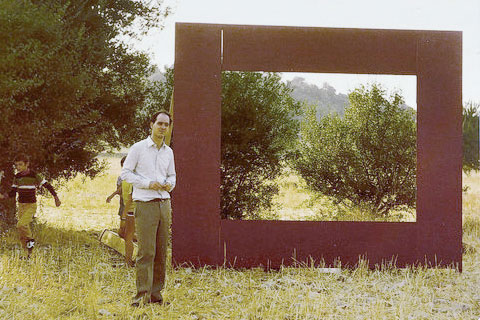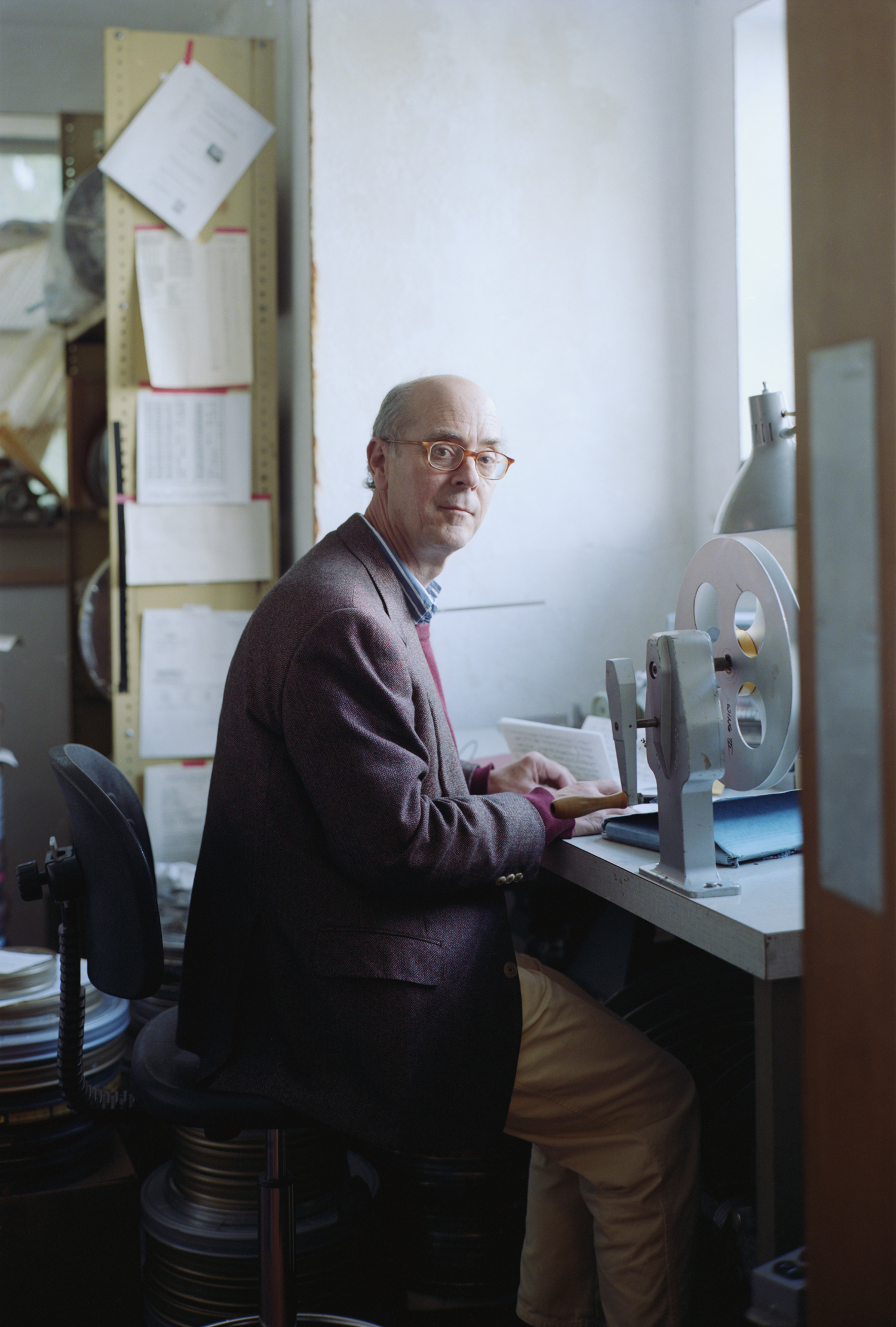It was the individual filmmakers in New American Cinema, their courage and freedom, that led me to become a filmmaker; and more precisely Gregory Markopoulos’s example of inspired dedication. While making my first film in New York in 1966, I saw films by Kenneth Anger, Ron Rice, Harry Smith, and Brakhage* at the Filmmakers’ Cinematheque and retrospectives of silent films by Fritz Lang, Carl Th. Dreyer and Abel Gance at MoMA and elsewhere, and Bresson at the Bleecker Street Cinema. Silent films and the New American Cinema were my touchstones.
In retrospect, I see my early filmmaking connected to Greece, where I first lived in 1967, and where I filmed Winged Dialogue (1967-8), Still Light (1970), Sotiros (1976-78), Efspychi (1983), Wingseed (1985), The Stoas (1991-97), The Ground (1993 – 2001) and Among the Eucalyptuses (2017).
I was fascinated by the 16mm Bolex camera and placed hand-cut filters in the camera’s aperture or controlled the space in front of the lens by using a compendium with mattes in Early Monthly Segments (1968-70) and later films. The event inside the camera showed one discovery after another.
The writings of Paul Valéry and Leonardo brought me to Florence, and Ruskin to Venice; Rilke and Ponge showed me the place of objects as a source and measure. Where I chose to live was decided by the possibility to film; Gregory Markopoulos’s determination in finding ways to support the filmmaking made my early films possible. I responded to each location through a sense of proportion in chosing either a static composition or moving the camera. The conscious and unconscious decisions made during filming became the key for editing the image and later the sound. From Spiracle (1967) to Still Light (1970), the starting point was homoerotic and lyric; and in The Count of Days (1969) or Palinode (1970), I tried to make sense of my encounter with Zürich. The discoveries and failures in my early films prepared the way for From the Notebook of… (1971/1998), when I understood for the first time the serious commitment needed to continue. I looked at Florentine painting for a brief but intense period; this influenced how I thought about the camera angle and choice of lens in Work done (1972/19990) and The Painting (1972/1999) and in the filmed space of Ruskin (1975/1997).
The mid-1970s were marked by a traffic accident near Athens; after Sotiros, the filmmaking was slower and the contours of the films, stronger. Our choice to live without a fixed residence, traveling constantly to gain help for the filmmaking, brought intense concentration and existential challenges. This was balanced by the beginnings of the Temenos Archive, stored intitally in a Swiss bank vault. In 1980, we organized the first projections in Lyssarea, Greece and cotinued the Temenos events every summer between 1980 and 1986. The filming of The Hedge Theater (1986-90/2002), The Stoas (1991-97) and The Ground (1993-2001) was for me the fulfillment of this way of life.
* (Inauguration of the Pleasure Dome, Chumlum, Early Abstractions, Sirius Remembered)
After Gregory’s death in 1992, I created a space for the archive in Zurich and two not-for-profits to support the restoration, preservation and projections, and I re-edited most of the films that I had made thus far. For ten years I moved back and forth between Europe and the United States, making internegatives and projection copies at Cinema Arts in Pennsylvania and introducing retrospectives and other screenings. While working on the 18 film cycle, My Hand Outstretched to the Winged Distance and Sightless Measure, I returned to Greece to film The Ground (1993 – 2001), at the same location, where I had filmed Winged Dialogue in 1967. During my filming on the island of Hydra, I sensed how my ascetic intentions encountered a stronger will to life.
The rewakening to color and the search for a new type of camera movement were the response to a vital change after completing the cycle. My return to film in the United States happened of it own accord; first in filming the intimate space of my mother’s home in Pitcher of Colored Light (2007) then Jacques Dehornois’s Brooklyn apartment for The Suppliant (2010). At the same time I commuted to Pennsylvania to restore Markopoulos’s Eniaios I – III. Filmmaking, projection and film preservation became three sides to my existance; standing behind it is the ideal of self-sufficiency and independence.
Switzerland remained the center of my activity. Living first in an old farmhouse in Zug (1993 – 98) and later in Zumikon (1999 – 2011), I created new sound tracks for nearly all of my films in Christian Beusch’s sound studio . During the years in Zumikon, I lived in the ground floor apartment below Dieter and Cécile Staehelin and gained a distinctly personal view of their life. My films, Listening to the Space in My Room (2013) and “Der Klang, die Welt…” (2018) speak of this transvaluation: Music as metaphor for a renewal of love and friendship. After the decades without a residence, I had the opportunity to film in a well-lived space.
After 2003, I divided my time between Zumikon and Berlin, working in one place or the other; and since 2011 I have resided in Berlin and work in a studio in Wilmersdorf. Ute Aurand has been the basic source for my Berlin existence, as apparent in The Sparrow Dream (2022). While my relation to Gregory Markopoulos has been a constant for more than five decades and the continued restoration of his Eniaios brings with it a working relation to a number of younger filmmakers.
Sources of inspiration are unexpected and varied.
Robert Beavers was born in Brookline, Massachusetts in 1949, and attended public schools in Weymouth (MA), Boston Latin School and Deerfield Academy before meeting the filmmaker Gregory J. Markopoulos and making his first 16mm film in New York City in 1966. He moved to Europe in 1967, and continues to make films in 16mm. His recent filming has been done in Massachusetts, Zumikon (Switzerland) and Berlin.



